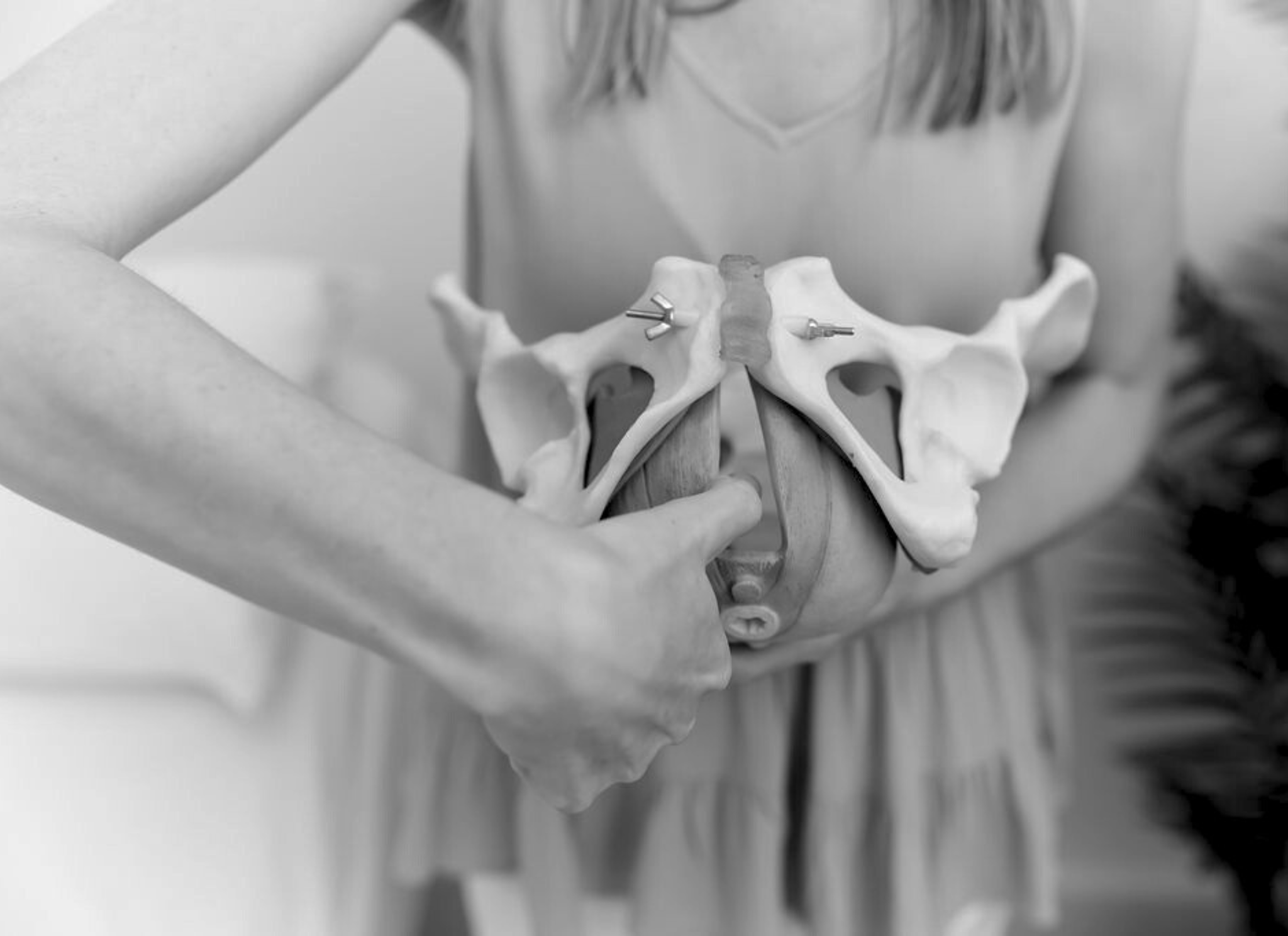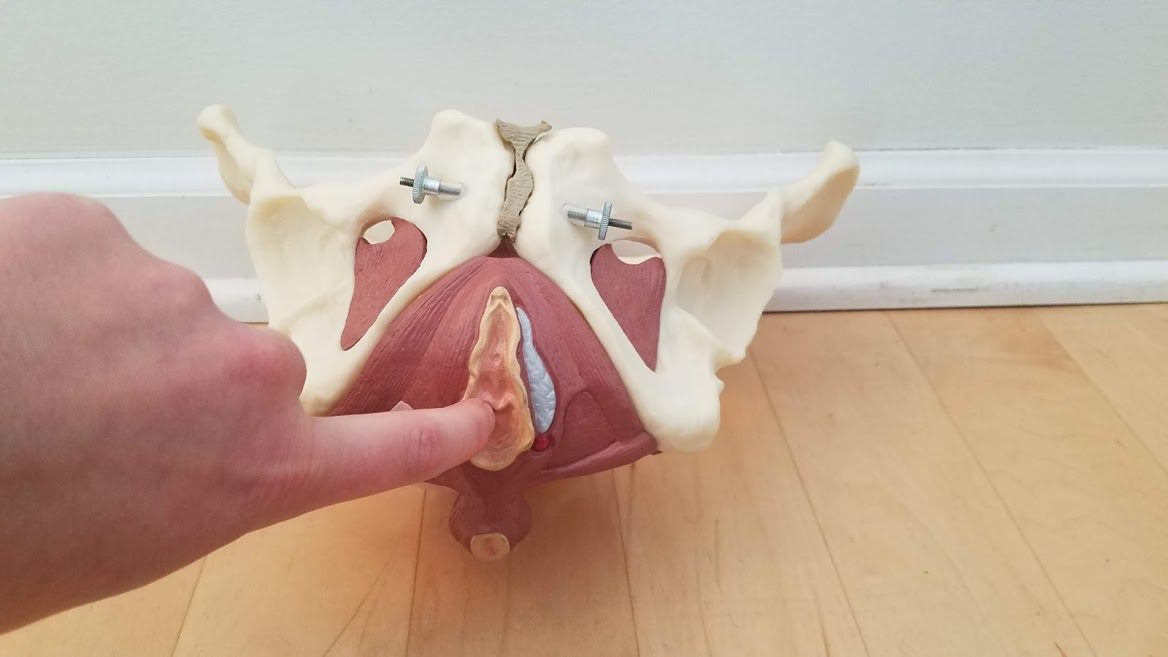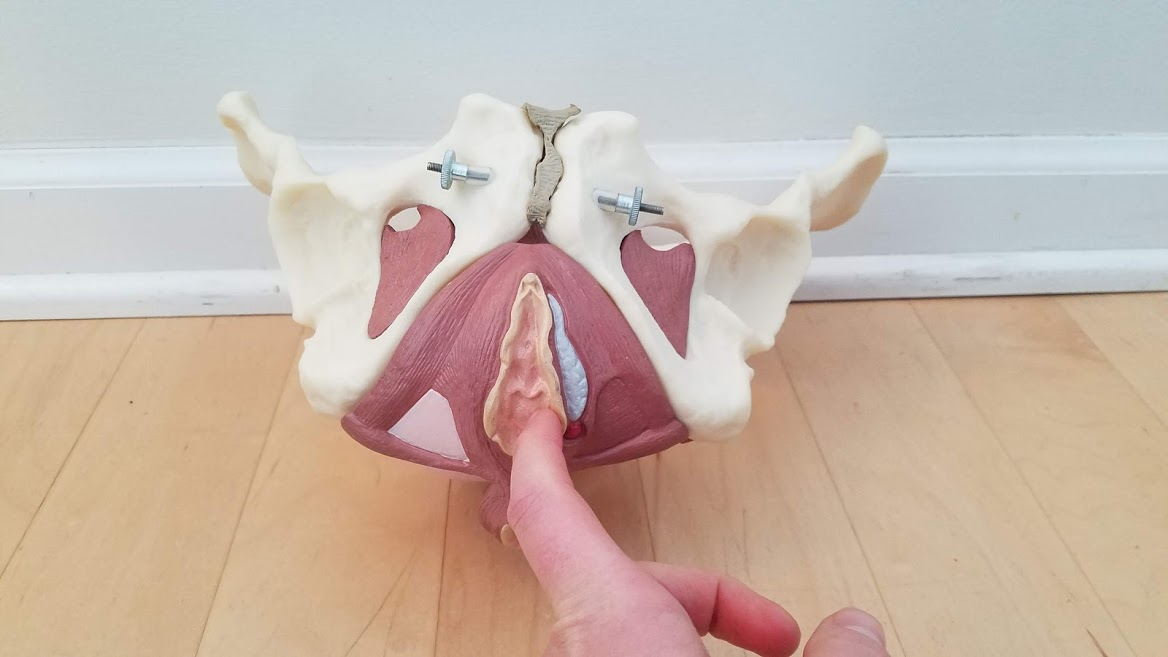You want me to massage what?!? “Vagina massage” and other types of pelvic floor massage can be beneficial during pregnancy.
Perineal Massage
The perineum is the area between the vaginal opening and your butt hole (anus). Massaging the perineum during the third trimester may help soften the tissues and helps prepare for a vaginal birth. This massage will benefit women who have tight, tense pelvic floor muscles. Other good reasons for perineal massage include:
- Pain with sex
- Incomplete bladder emptying
- Constipation
- Vaginal pain/itching/burning
- Pain with sitting
Perineal massage can help prevent vaginal tearing during childbirth. Evidence suggests it decreases this during first time pregnancies the most. It can also help postpartum for healing and scar tissue.
How does perineal massage help?
Your pelvic floor muscles sit at the base of your pelvis. They support your pelvic organs. These muscles hold in pee and poop until you are ready to empty, and have a role in sexual activity and childbirth. These muscles are like any other muscles in your body.
They can get short and tight and go into spasm, which can cause vaginal penetration to be difficult and sometimes impossible. Pain can also occur with deeper penetration, orgasm, or even after intercourse is over. It’s important to relax and lengthen these muscles to their normal resting state.
A pelvic floor physical therapist can do manual therapy to relax the muscles. “Vagina massage” or manual therapy uses a finger pad to apply pressure to a tense or overactive muscle. This helps improve blood flow and encourage relaxation.
Perineal massage can especially be helpful for postpartum women. It’s also helpful for those who experience pain with sex, or those who have cesarean or perineal tears.
For expecting mothers
For pregnant mamas, there are no negative effects. Perineal massage can decrease the severity of vaginal tearing during birth. Start around 34-35 weeks. It’s crucial to bear down the right way during childbirth. This will ensure pelvic floor muscle relaxation. Avoid breath holding!
Perineal massage is helpful after a vaginal tear or episiotomy as well after the scar heals. Massage the area to soften the scar tissue. Postpartum, make sure to be very gentle with your pressure as these tissues are still healing. Perineal massage can help lessen the perineal trauma. It can also lessen perineal pain when performed before birth. This is usually after a vaginal delivery.
Perineal massage vs. pelvic floor massage during pregnancy
One of type of pelvic floor massage during pregnancy we recommend is perineal massage. Pelvic floor massage during pregnancy is different from a perineal massage. They each provide different benefits in different areas of the body.
Pelvic floor massage reduces tension in the pelvic muscles and ligaments. It can help reduce discomfort in the hips, lower back and thighs, which is common during pregnancy. Pelvic floor massage also helps increase blood flow to the pelvic region. This allows for better circulation during labor.
Perineal massage focuses on the area between the vagina and anus (perineum). During this massage, fingers and thumbs stretch the area to increase its elasticity. This helps reduce tearing and allows for an easier delivery. If you have perineum pain in pregnancy, this massage might be right for you.
Perineal massage tools
There are a few tools for this type of massage.
- Vaginal dilators are slender, tapered rods inserted into the vagina. They dilate the opening of the perineum. They come in various sizes and materials such as metal, plastic, or rubber. They are usually used with a lubricant or vaginal cream. This helps ease insertion.
- Pelvic wands or crystal wands are flexible and come in various sizes, shapes, and lengths. Use them to massage the perineum or to dilate the opening during childbirth.
- Other tools include dilators with a handle. The handle makes it easier to dilate the opening of the perineum.
- You may also use massage oils and creams to provide a comfortable massage experience.
How do I do it?
There are several ways to perform manual therapy on the pelvic floor muscles. This will also help retrain the vaginal wall muscles to relax. Make sure to wash your hands with soap and water before starting. Below is a step by step guide on how to do it.
Let’s use a clock face as an example of how to describe a perineal massage as it pertains to the vaginal opening:
- 12:00 being towards the urethra and clitoris
- 6:00 being towards the perineum and anus
Usually instructions are something like below:
- Using your index finger, insert a clean finger in the vaginal opening towards the 6:00 position.
- Press down and hold for 30-60 seconds. Your goal is to feel a stretch, a little tingling, but not pain greater than 3/10.
- Move your finger towards 3:00 then back to 6:00 then over to 9:00. You want to make a “U” and hold within that region 30-60 seconds in a few different spots.
- You could also enter a second finger or more and work to spread the vaginal opening wider from 3:00-6:00 and 6:00-9:00 or 3:00-9:00.
- Perform for a few minutes (~5min), even 1 minute is a great starting place.
- Perform daily or every other day.
*This may feel like a slight burning or tingling or burning sensation. Think: like if you hook your fingers around your lips and pull them apart.
Remember, it’s beneficial to perform during pregnancy and postpartum if it feels right for you. Consider it as long as you don’t have any precautions surrounding internal work. Do your own research and discuss this with any providers to see if it’s a fit for you.
____________________________________________________________________________________________________
Are you currently pregnant or planning to conceive? If so, make sure to download my FREE resource — How to Prepare Your Pelvic Floor & Core for Childbirth + 8 Must-Dos for C-Section and Vaginal Deliveries.
____________________________________________________________________________________________________
Some links may be affiliate links. The products we recommend are products we use or recommend to clients.









